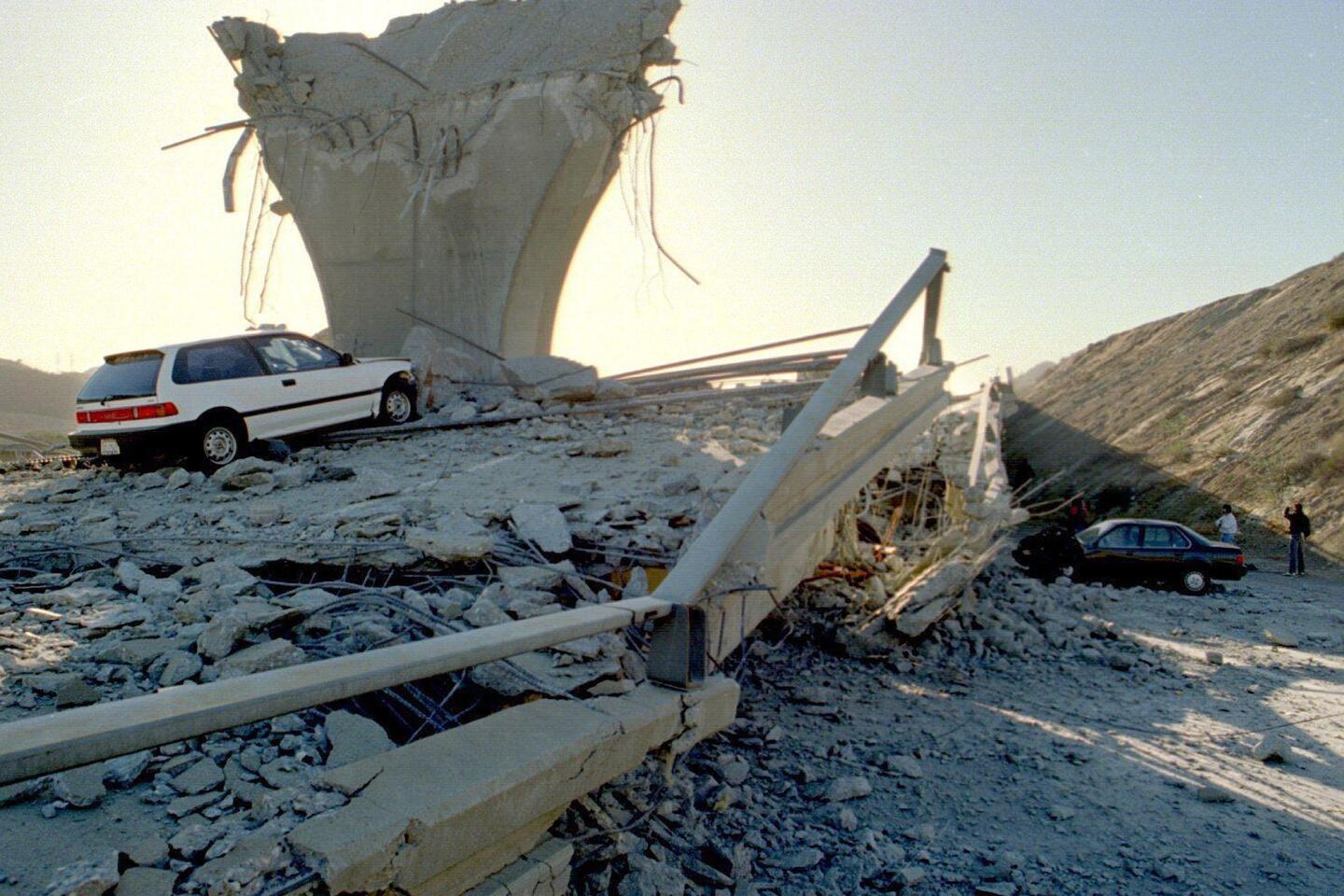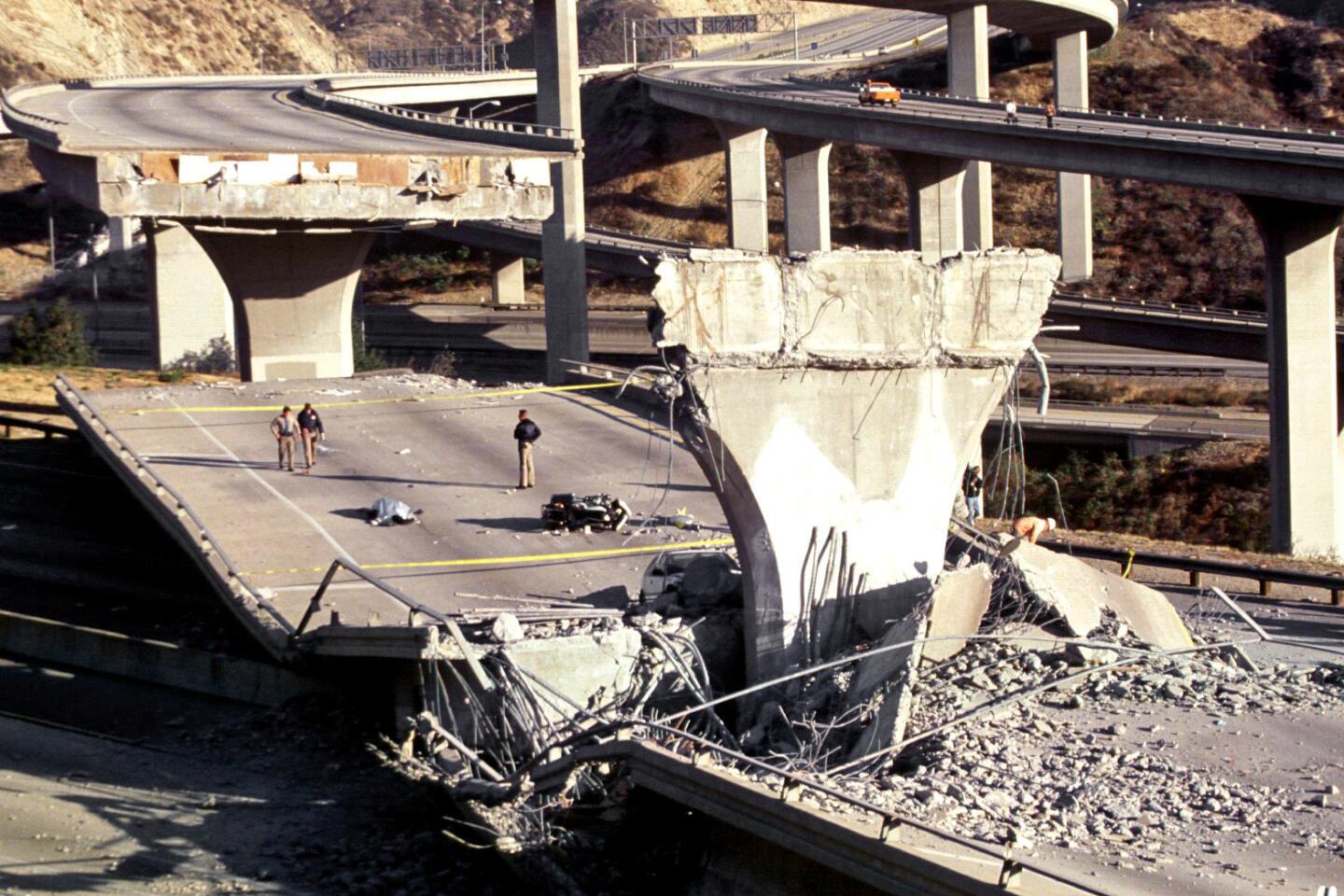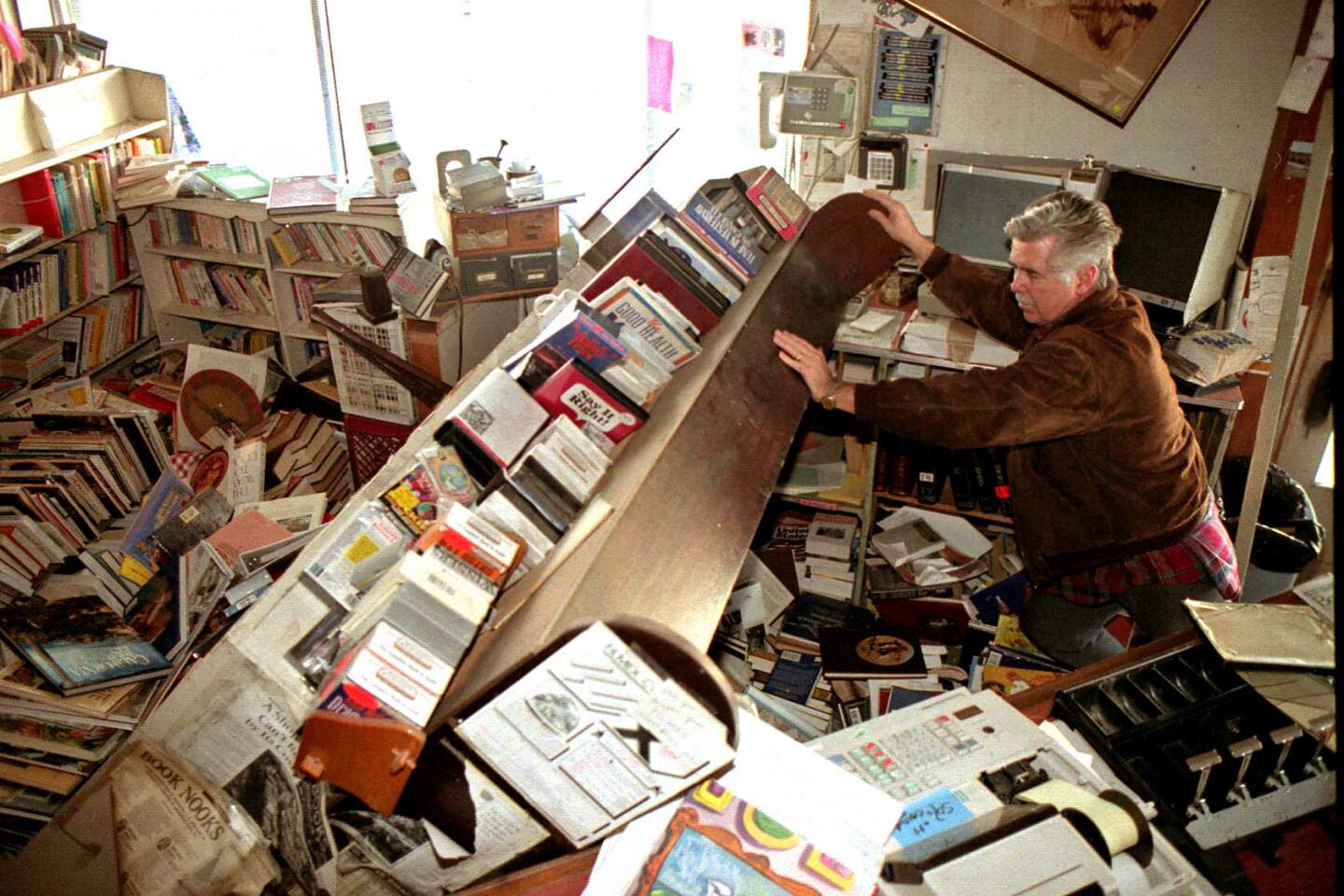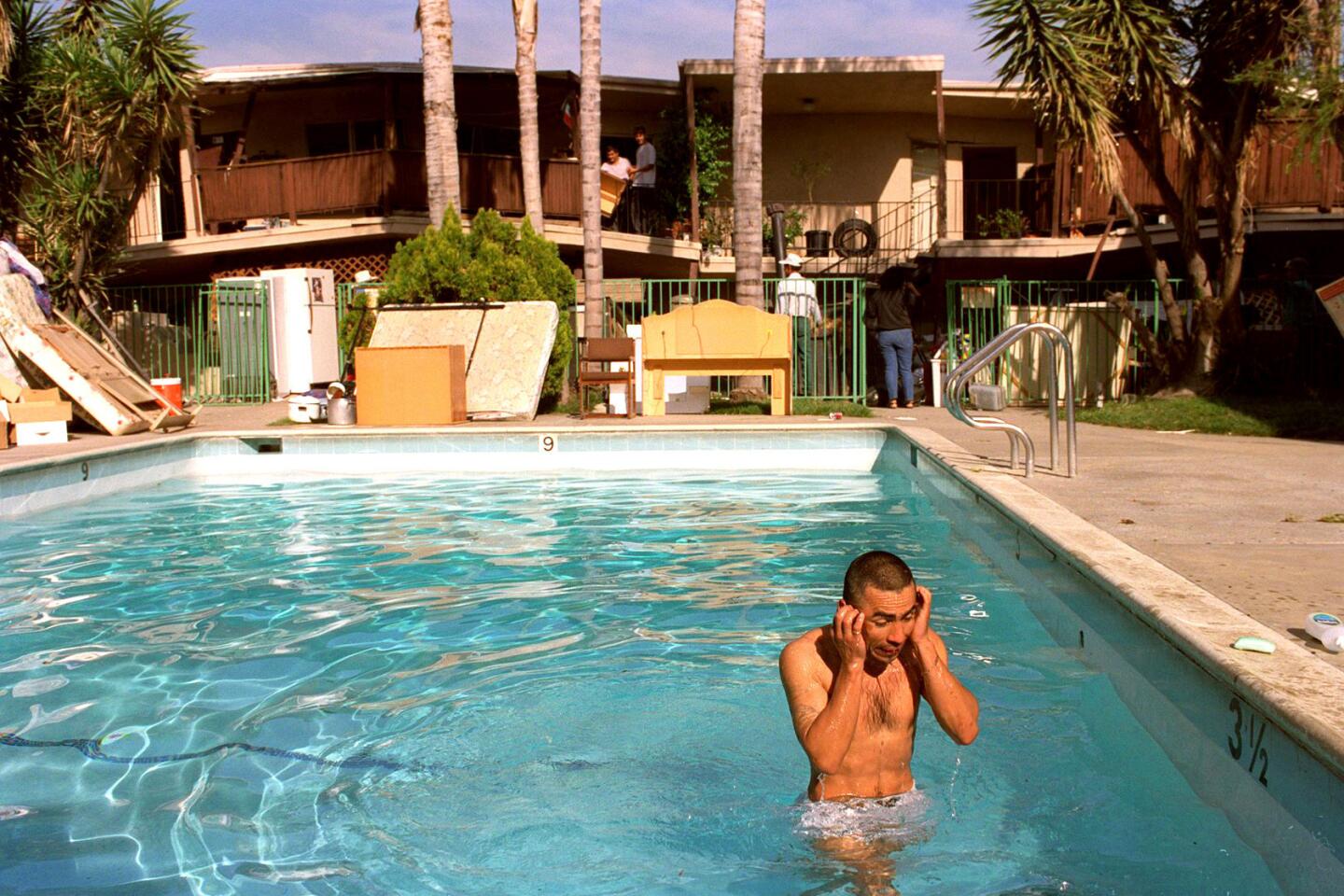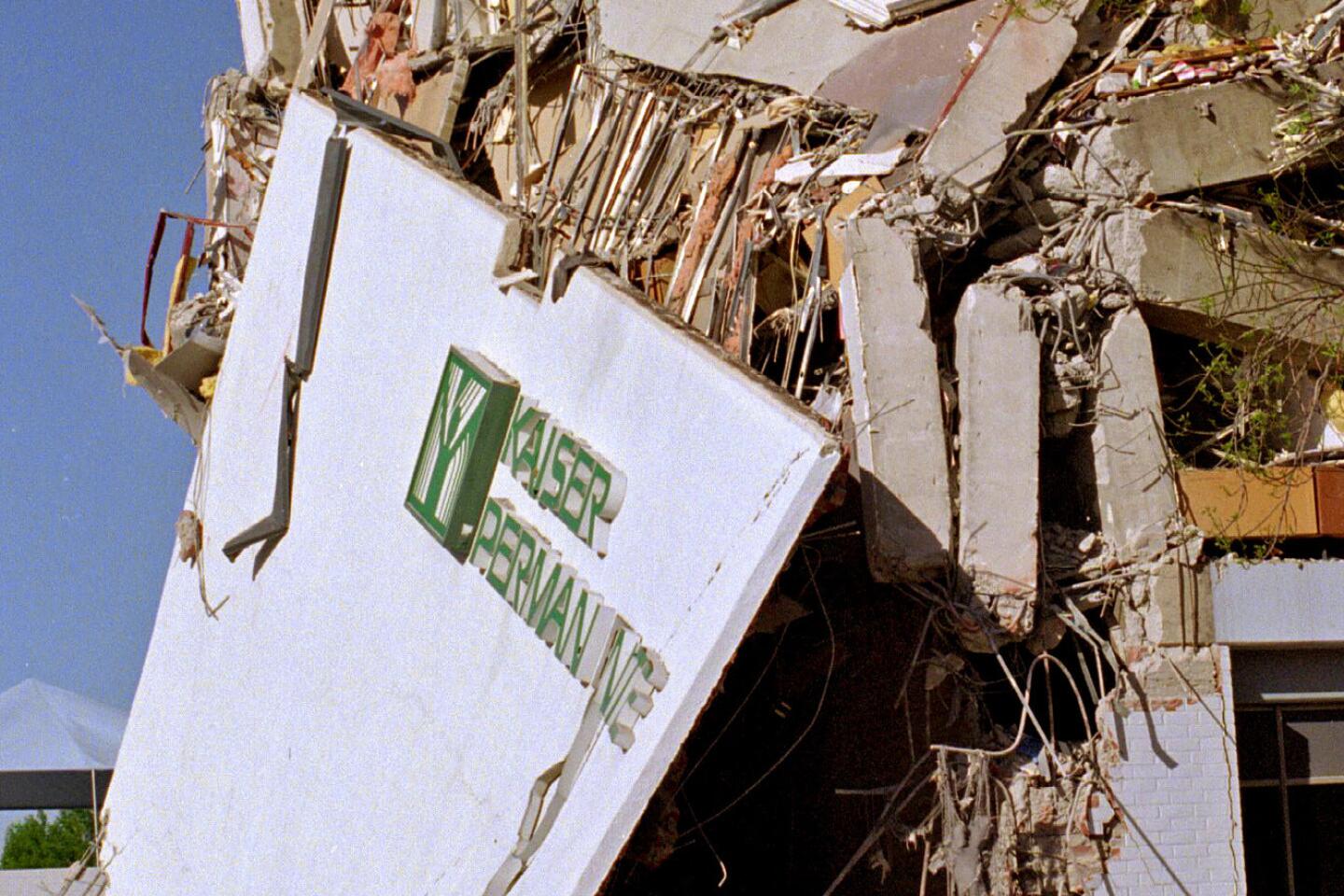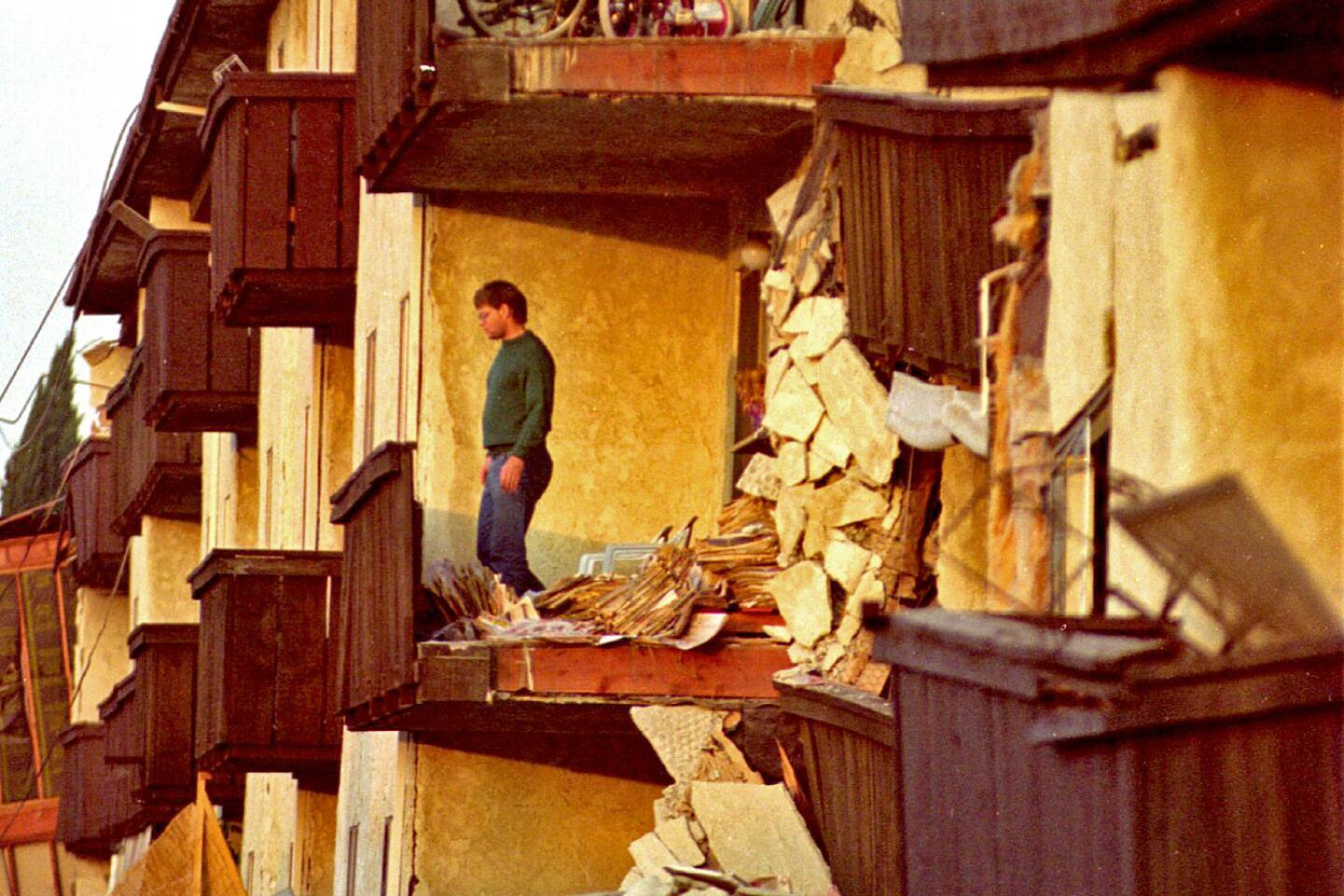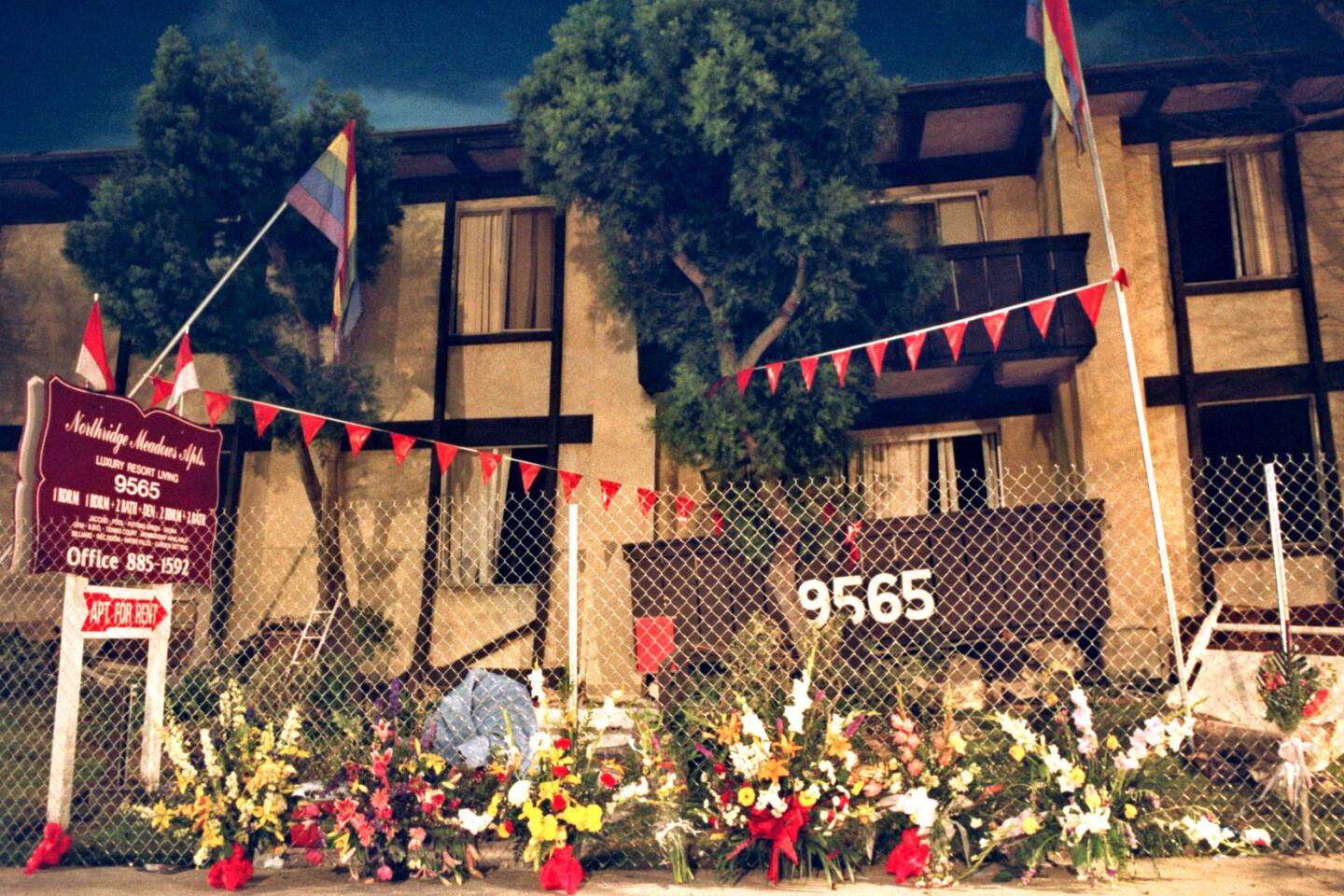From the Archives: An emerging Northridge earthquake death toll
- Share via
Editor’s note: This story was originally published in the Los Angeles Times on Jan. 30, 1994.
Nearly two weeks after the 6.6 magnitude earthquake rocked Los Angeles, the death toll keeps shifting. Did 57 people die? Sixty? Sixty-one?
“There’s a lot of fire departments and hospitals out there playing coroner,” said Scott Carrier, a spokesman for the Los Angeles County coroner’s office. “That’s fine. They can say anything they want, but as far as we’re concerned the official number is 57.”
Although that number may rise or fall in the weeks ahead, a picture has begun to emerge of how death struck, and who, and where. For example, most victims were over 60. Most were men. And the vast majority — 41 — died in the San Fernando Valley, scene of a disastrous apartment building collapse that killed 16. Heart attacks accounted for 22 deaths — second only to injury-related fatalities, 29.
Tabulating the death toll in a major calamity is anything but an exact science. Carrier points out that the death toll from the 1992 Los Angeles riots has been revised several times, and that only recently a more accurate number has emerged.
“It was first reported to the coroner’s office that there were 61 riot-related deaths,” Carrier said. “That number has since been reduced to 54.”
Similarly, the number of deaths tied to the Jan. 17 earthquake could change in the weeks and months ahead, he said. Some names may be pared as more is learned about their deaths, others could be added as overworked hospital staffs make tardy notifications to the coroner.
“And some may die months later from injuries they suffered,” Carrier said.
An analysis of what is known so far about the 57 quake victims reveals:
- 30 were over age 60. Only eight were under 25. The youngest victim was 4.
- 29 died of injuries suffered in the quake.
- 22 died of heart attacks, 16 were over 60.
- More than half the victims — 32 — were men.
- 42 people died in the Valley, and nine in other parts of Los Angeles, including two in Hollywood. There were two deaths in Santa Monica and one each in Pico Rivera, Inglewood, Torrance and Marina del Rey.
- 41 victims were white, 11 were Latinos, four were Asian Americans and one was black.
In the coming weeks, Carrier said, coroner’s investigators will give particular scrutiny to cases involving heart attack victims. (On an average day, there are 33 heart attack fatalities reported in Los Angeles County. The total number of such deaths on the day of the quake has not yet been computed, Carrier said.)
See the Los Angeles Times front pages in the days following the Northridge earthquake »
“We have some people who died at the time of the earthquake, and we have some people who died an hour later,” Carrier said. “We will have to sit down at a later time and make a determination if those really were earthquake-related. Some may have had a predisposed disease.”
Relatives and friends of some heart attack victims, such as 90-year-old Marguerite Burlington of Reseda, have said that they were literally scared to death. Medical experts say this is entirely possible.
A huge adrenaline rush brought on by a frightening situation can affect the electrical fibers that generate a person’s heartbeat, causing an irregular beat that can result in a heart attack, said Dr. Linda Demer, chief of cardiology at UCLA Medical Center. An adrenaline rush can also result in a coronary spasm, where the heart muscle squeezes down and closes off the artery, preventing the flow of blood, she said.
Related: A big earthquake would topple countless buildings, but many cities ignore the danger »
In the first instance, death is immediate, whereas in the case of a coronary spasm, death may come later when a person is in the hospital, she said.
“So in a sense it is possible to be frightened to death,” Demer said, adding that she was surprised that so many cardiac deaths were attributed to the quake.
Demer said she plans to consult officials from the American Heart Assn. about putting together programs to help those who suffer from heart disease better prepare for the mental and emotional shock of an earthquake.
“It is just as important to prepare psychologically as it is physically” for these types of situations, she said. “That’s what we should be learning from this.”
Well over half of the quake victims died in a home, apartment or trailer. The largest number of deaths to occur at a single location was at the collapsed Northridge Meadows apartments, where 16 were killed.
Although the total number of deaths in Los Angeles County stands at 57, some reports have put the number at 60 or more.
Those added to some lists include two people, one of whom was the son of Dodgers announcer Vin Scully, who died in the crash of a helicopter doing a post-quake oil pipeline inspection in the Tejon Pass. But the deaths, which occurred when the helicopter apparently hit power lines, are not officially considered quake-related.
“That had nothing to do with the earthquake,” said Helen Bruce Frankel, a nurse in the Kern County coroner’s office. “We didn’t count it. They do those pipeline inspections regularly.”
Another death attributed in some reports to the quake involved an unidentified truck driver who died late Wednesday when his truck overturned on the transition road from Placerita Canyon Road to Sierra Highway, one of the detours around the shattered junction of the Golden State and Antelope Valley freeways.
“That was a traffic accident,” Carrier said. “But that case may be reviewed. You could say that was indirectly related to the earthquake.”
San Bernardino County officials also reported one death that may have been quake-related.
Elizabeth Brace, 37, of Rancho Cucamonga died while running to her baby’s crib during the quake. It was first reported that Brace may have died when she tripped on a toy. But Deputy Coroner Gabriel Morales said fright as a cause of death, perhaps in the form of a massive adrenaline rush, is not being ruled out. Officials said it would take at least six weeks for test results to be completed.
Officials at Simi Valley Hospital in Ventura County initially reported that Joseph John Makert, 62, had died of a quake-related heart attack, but later said that the quake may not have caused the death.
A relative of the victim, who was stricken about an hour after the quake while cleaning up his house, said last week that the family believed that the timing was coincidental.
Even among the 57 victims on the L.A. coroner’s official list, there are questions about how some died. Officials are investigating the deaths of Evelynn B. Henson, 92, whose Chatsworth mobile home caught fire after the quake, and Lionel Ventura, 21, of Sun Valley, whose hospital respirator stopped functioning when electrical power was disrupted. The cause of death of four others has yet to be determined.
More to Read
Sign up for Essential California
The most important California stories and recommendations in your inbox every morning.
You may occasionally receive promotional content from the Los Angeles Times.
